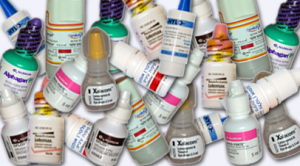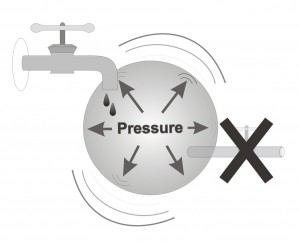This is a particularly important page, which I encourage you to read, particularly if you routinely place eye-drops in your eyes.
Please note that this is a particularly important section! And that there is a good chance that the information presented here will help to improve your quality of life and may even assist you in better managing your glaucoma. My suggestion is that you read this section in depth, and even pass it along to your friends (either by printing it, or by sending them the link via e-mail), good luck…
It might initially seem a little strange that one would invest so much thought and such a detailed explanation on the instillation of eye-drops, such a common procedure. However, consider the following fact for a moment: regardless of the accuracy of the diagnosis, the skill and expertise of your ophthalmologist, the interpretation of visual field testing, optic nerve imaging, and a thorough eye examination; if the eye-drops do not enter the eye, all of the above is of absolutely no benefit. In addition, the success of a glaucoma operation is dependent to a large extent on the placement of eye-drops after the surgery whose purpose is to preserve the benefit attained during surgery. You will be surprised to hear that in many studies that were done in this field, it was consistently found that less than fifty percent of patients instilled their eye-drops correctly! This finding shows that chances are high that you too (or a family member who suffers from glaucoma) can make use of the advice provided below:
1. The most important tip regarding instilling eye-drops, which you might not have heard yet, aims at enabling the eye-drop to remain in contact with the eye for as long as possible. This is because the eye-drop continues to be absorbed only while it is in direct contact with the surface of eye. As a rule, the eye-drops for glaucoma must penetrate the eyeball in order to function. When you instill a drop onto the eye, the natural tendency is for the drop to flow through the tear duct to the nasal cavity and from there to the throat (this is the reason that after instilling eye drops there is a bitter taste in the throat. In order to minimize this “escape” of the eye-drop from the eye to the nose, you can do one of the following two things (or even better, both).
The first, simpler, option is to close the eye for one minute immediately following instillation of any eye-drop. This action is helpful because opening and closing the eye activates a pumping mechanism which pushes the tears that are found on the surface of the eye into the tear sac, and from there to the nose. The second option, which is slightly more complicated, is to block the outlet of the tear ducts by gently pressing with the finger for one minute, this way the drop will remain in the eye for a much longer period. Pressing is done gently (it is not necessary to apply force) at the area of the inner angle of the eyelids (between the central corner of the eye and the root of the nose, as can be seen in the photo).
Note! Many studies have shown unequivocally that maximum efficiency is obtained when both actions are performed together. It is possible to perform these actions in each eye separately, or alternatively, to instill the drops in both eyes, to close both eyes and press simultaneously with the index finger and thumb on either side of the root of the nose for one minute (see photograph).
This action of pressing, and/or closing the eye, achieves three important objectives:
A. More active ingredient is absorbed into the eye (up to a 50% improvement in absorption, which may almost double the effect of the medicine).
B. A smaller amount of the medicine reaches the nose (where it is absorbed into the bloodstream) and therefore there are fewer systemic side effects from the medicine.
C. The minute during which you are closing your eyes and pressing on the outlet of the tear ducts (which are found on either side of the root of the nose) provides you with a break so that you can rest, collect your thoughts, and relax or meditate a little.
****************************************
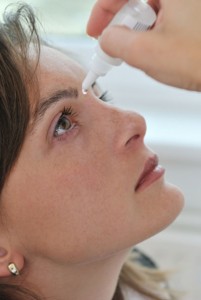
2. Many patients are concerned with the exact hour at which they should best instill their eye-drops, and by the exact amount of time that should be maintained between the morning and the evening dose. I will explain what I mean: It does not matter what time once-daily drops are taken, however it is advisable to take them more or less at the same hour each day. (by ‘more or less’, a change in the time of taking the eye-drops from one day to the next of up to two hours seems reasonable to me). Regarding drops that are taken once a day, you must ask your doctor if the medication is meant to be taken in the morning or in the evening because there are certain medications which have a greater influence on the pressure when taken in the morning (such as Tiloptic, Nyolol) and others which it is preferable to take in the evening or nighttime (such as Xalatan, Xalacom, Travatan and Lumigan).
The ideal time spacing between drops that are taken twice a day is twelve hours. However, an interval of between ten and fourteen hours (two hours either way) seems very reasonable to me.
The same applies for drops that are taken three and those that are taken four times a day. A difference of two hours either way from the ideal interval seems reasonable to me.
****************************************
3. Is it possible that not enough medicine reaches the eye while instilling the drops?
The answer is that it is highly unlikely, even impossible, unless the drop did not enter the eye at all. If you squeeze out a few eye-drops from the bottle (one after the other) and you watch as the drops come out, you will see that all of the drops that leave the tip of the bottle are of the same volume (size) and rather uniform (they are more or less identical). This is one of the characteristics that the manufacturer specified for the bottle design. Therefore, the moment the drop left the bottle and entered the eye it will have enough volume to contain the necessary dose. As a matter of fact, a drop contains more volume than the eye can hold, therefore even if only one drop reaches the eye, as soon as the eye is closed some of the drop will be spilled out of the eye (as a tear).
However, the amount that will stay in the eye is always enough to introduce the necessary amount of active ingredient into the eye. One exception is if a particular kind of medication needs shaking before use. This is classically needed when the medication is a colloid rather than a solution. In this case if one forgets to shake the bottle, an uneven amount of active ingredient can be present in each drop that leaves the bottle. An observant person will note that the size of the drop that comes out of different bottles is not uniform, rather, that each bottle has slightly different sized drops. This fact is true, and is connected to the manufacturer’s decision as to what size drop they are interested in instilling on each squeeze. Regardless of the size of the drop or the exact build of the bottle, what is important for the user to know is that as long as the drop reached the eye (it does not matter where exactly the drop reached the surface of the eye), enough active ingredient has penetrated the eye and one can be certain that the medicine will have an effect. As long as the drop fell between the lids and touched the eye, you are OK, it makes no difference where on the surface of the eye the drop hit.
****************************************
4. Is it possible for too much medicine to be instilled while placing the drops?
Every once in a while a concerned patient will ask me if there is a risk associated with accidentally instilling more than one drop in the eye? The answer is, most definitely, NO! There is no risk to the eye from instilling more drops than are necessary, because all the surplus will be spilled out of the eye (as tears). Even if we were to instill the entire bottle at once, the eyelid opening cannot contain more than the volume of a single drop, and in fact, slightly less than one drop.
On the other hand, there are three reasons why it is advisable to attempt not to instill more than is necessary (In other words: one drop each time the medicine is taken is enough).
Firstly, wasting extra drops will cause the bottle to be insufficient for the entire month, and toward the end of the month you are likely to find yourself with an empty bottle, and a Health Fund (Kupat Cholim) that is not willing to fill your prescription more than once a month.
Secondly, the same drops which trickle down the lower eyelid (as tears do) are liable to irritate the skin of the eyelid, and even to cause redness and slight swelling of the skin of the lower eyelid if an allergy to the drop develops. For this reason, it is recommended to wipe the extra drops that trickle out of the eye with a dry tissue (or even with a wet tissue if a large amount of drops trickled down), in order to prevent the active ingredient from drying on the surface of the skin of the lower eyelid and irritating it over time. A third reason has to do with the fact that while the extra drops will trickle mainly out of the eye, onto the lower eyelid, some of the drops may also trickle down into the opening of the tear duct and from there to the area of the nose and throat. The part which reaches the nose will be absorbed entirely into the body and can lead to the development of systemic side-effects, even though they are generally far less significant as a result of eye-drops when compared with taking oral medication. Still, it is always advisable to minimize side-effects as much as possible, and the way to do this is by closing the eyes and pressing on the outlet of the tear duct, as I explained in detail in one of the above paragraphs.
****************************************
5. How many types of medicines can one take for glaucoma, and is there nothing to worry about when taking so many different types of drops.
There are patients who instill two, three and even four or five types of drops in the same eye (or in both eyes). Sometimes they approach me concerned that there is possible damage caused to them by taking “too many types of drops.” My answer is that as a rule, there is no danger involved; rather, the opposite is true, the variety of drops increases the likelihood that you will succeed in lowering the pressure as much as possible and thus stabilize your glaucoma. Occasionally, in addition to drops to lower eye-pressure the patient also receives drops for other purposes such as antibiotics or drops to prevent infection.
As a rule, there are generally no significant interactions between eye-drops, contrary to the mutual, and occasionally significant, effects that are sometimes found between medicines that are taken as pills. If so, what are the disadvantages in taking so many eye-drops at the same time? Well, firstly, it can be a nuisance and a bother (a waste of time), but this is secondary compared to the advantages obtained in better treating your glaucoma. Secondly, eye-drops are generally very expensive, but again, they are being taken for a good cause. Luckily for patients, the vast majority of eye-drops are covered by your health insurance and therefore most of their cost is subsidized by Health Funds.
When many drops are taken together, there is of course some increase in the likelihood of allergies appearing to any particular drop. If this indeed happens, it is not always easy for the ophthalmologist to determine which is the drop that is causing this side-effect.
As a rule, the ophthalmologist will be happy to reduce, as much as possible, the number of eye-drops that are taken. However, there are patients whose glaucoma is not manageable without many different types of drops taken simultaneously, and these patients will be candidates for surgery in the event that they cannot be stabilized by medications or by a combination of medications and laser treatment.
****************************************
6. In what order am I supposed to take the eye-drops?
When a person uses more than one type of drop, the question arises in what order to take them. My answer is simple: It does not matter in which order the drops are taken, as long as one waits five minutes between different bottles of drops. Since drops are fully absorbed after 5 minutes, the order is hence not significant. If, on the other hand, you do not wait 5 minutes between drops (or as a minimum at least a minute or two), there is a risk that the second drop will wash the first drop out before the first drop had time to be fully absorbed.
There is one exception to this rule: Drops which come in the form of gel (such as Nyolol gel and artificial tears which are more viscous) as well as different creams should always be instilled last because it takes longer for the gel and the cream to be absorbed. Additionally, they provide the eye with moisture that we are not interested in washing away with other drops, rather we wish for them to stay in the eye.
****************************************
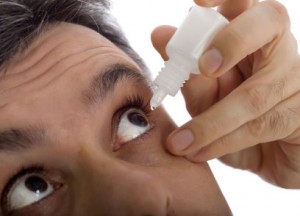
7. While the Health Fund provides me with a certain amount of drops, there are some bottles which do not last me an entire month.
So true!
Except for a few extremely exceptional cases, for the most part, Health Funds and health insurance companies do not allow for more than one bottle of each type of eye-drop per month. On the other hand, there are patients who do not succeed in instilling the drops in such a way that the bottle will last for an entire month. There are certain types of drops that tend to be used up more quickly, and others that can last for more than a month. This is related to the size of the drop, but more so with the difficulty with which the drop is released from the bottle. What I mean is that there are bottles that even if one were to press with all his strength for the most part only one drop would come out, whereas when others are pressed more strongly than is necessary two drops or even a light flow of drops will be released.
What are possible solutions for this situation? Firstly, the doctor in the Health Fund can, often, increase the allocation of eye-drops, for example 4 bottles every three months, or two bottles per month, a solution which can solve the problem. Patients who have special reasons for their inability to easily instill drops, for instance those who suffer from Parkinson’s disease (which causes a slight but uncontrollable tremor in the hands) or those with similar problems are likely to more easily arrange such an allocation. Secondly, attention to gentle pressing on the bottle can help to prevent, as much as possible, wasted drops. Lastly, it is important to remember that if there is no alternative, it is always possible to buy the additional drops that are necessary from a regular pharmacy (one that is not subsidized by the Health Fund), and thus to provide the remainder with your own money. Remember that such a purchase, even though it does not require authorization from the Health Fund, still requires a prescription from a doctor.
****************************************
8. My doctor (or pharmacist) requested that I instill 2 drops from each bottle every time I instill drops.
As I explained, it is sufficient that one drop enters the eye in order to provide the full effect of the drug. Every drop after the first does not strengthen the effect of the drug at all. If so, why are there doctors who recommend instilling two drops at the same time? The likely explanation is that they believe that it is possible that the first drop will not enter the eye, and therefore by instilling 2 drops the likelihood that at least one of them will enter the eye is increased. Because there are clear disadvantages, on which I elaborated, of instilling excess drops (wasting the medication, spilling of the drops onto the lower eyelid, and an increase in risk of side-effects), my unequivocal recommendation is that one drop which definitely entered the eye is sufficient.
****************************************
9. How will I know that the drop that I instilled actually entered the eye?
This important question remains, how will we know that the drop indeed entered the eye? There are a few clues: Firstly, it is possible to feel wetness within the eye, and sometimes one can feel wetness of the eyelashes, which proves beyond a doubt that the drop in fact entered the eye. Secondly, sometimes one feels the coldness of the drop. In order to utilize this characteristic to our benefit one can (but it is certainly not necessary) keep the drops in the refrigerator and then it is easier to feel that the drop definitely entered the eye. Thirdly, I suggest that you ask a family member occasionally to watch while you instill the drops so that they can tell you if the drop actually entered the eye. If not, he or she can also direct you in which direction to move, so that the next drop will indeed reach the eye. Assistance of a family member is very helpful when one is learning to instill drops and nervous about doing so. When instilling drops becomes “second nature,” the help of another person is no longer necessary.
“Experienced instillers” those who have instilled eye-drops for a number of months or years will laugh about the question how to know that the drop indeed entered the eye. They will say “one simply feels it.” Similarly, “experienced instillers” ‘miss the target’ less often because with time they learn to direct the drop so that it will fall directly into the eye.
****************************************
10. What would you suggest me do in order to maintain cleanliness and sterility?
While complete sterility (like sterility which is a must in an operating room) is not necessary for instilling eye-drops, it is desirable to maintain cleanliness and thus minimize the risk for infection as much as possible. My recommendations in order to achieve this are very simple:
* Wash your hands before you start.
* Place the bottle-cap in a clean place. The cap can be the source for contamination of the bottle.
* Use a clean tissue (or clean cotton ball) to wipe the eye after instilling the drop. I recommend using tissue which is generally more available and usually comes in a package which keeps the other tissues clean even after the package was opened.
* Try, as much as possible, to prevent the tip of the bottle from touching anything: not the eye, the eyelashes, nor the tips of your fingers. As a rule, it is advisable not to clean (or touch) the tip of the bottle, however if it is necessary, use a completely clean tissue (and certainly not your fingers) because every contamination of the tip of the bottle will remain with you until the bottle is finished.
* When you are done instilling the drop, close the bottle. A bottle which is left open can be more easily contaminated.
Remember: If you underwent eye surgery recently, for two weeks after the surgery strictly following these rules of cleanliness is of even greater significance. This is true until the eye heals from the surgery. In the initial period after surgery it is also advisable not to share bottles between the two eyes, hence, even if you take the same drop in both eyes, for the recently operated eye open a new bottle immediately after surgery, and only use that bottle for the operated eye, while a different bottle will be used for the non-operated eye.
It seems that there are more than 10 rules and tips which can help improve the instilling of drops and thus, the treatment of glaucoma. Continue reading the rest of this web page and remember that you can pass this section to your family members, or friends, who instill eye-drops on a regular basis (you can print this page or else send the Internet link).
****************************************
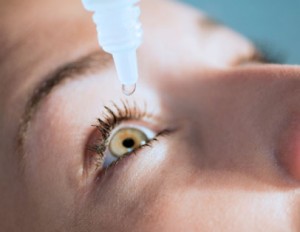 11. Is it preferable for the patient to instill the drops for himself or for another person to instill them for him?
11. Is it preferable for the patient to instill the drops for himself or for another person to instill them for him?
The answer to this question is clear: It is always preferable that the person himself instill the drops because then the person’s independence is preserved, it is both faster and more convenient to do it yourself, and you are free to instill whenever and wherever you want, without relying on other people and factors. However, certain people, such as those with disabilities are likely to have difficulty instilling the drops themselves. Then, the help of another person is beneficial. Some have simply never learned how to do it and therefore rely on another person to instill their drops. There is no problem with continuing to do so, however, it is desirable for each patient to at least know how to instill eye-drops because there might not always be another person around, who can place the eye drops for them. You will be surprised to learn that most patients, after some training and practice, prefer to instill the drops themselves because of the convenience, speed, availability and first and foremost, the independence which this provides.
However, initially, when learning, it may not be easy to instill the drops quickly while insuring that the drops actually enter the eye each time. Thus, for those starting out, it is a good idea to have another person present, who can comment on whether the drop entered the eye, and to also provide some encouragement and support.
****************************************
12. There are patients who are concerned with the question of why certain drops are taken only once a day while others are taken three times a day. Another question in this context is: Will the intraocular pressure decrease more substantially if a certain drop is taken more times a day? The answer to this question is NO.
When a pharmaceutical company produces and markets a drug it uses controlled and comprehensive studies to check the duration of the effect (how many hours after instilling the drug is it still active in reducing the pressure). From there the decision is reached regarding how many times a day to use the drug. The decision about how many times a day each medication needs to be taken is derived solely based on the duration of its effect. Thus, it is understood why for the most part you cannot achieve an additional treatment effect by taking a twice a day drop, for example, three or even four times a day.
****************************************
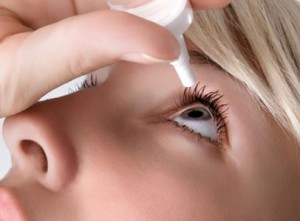 13. Following the comprehensive discussion above, you may wonder why your eye doctor does not wait five minutes after instilling from one bottle and before instilling from a second one. You may have noticed that while dilating pupils for example, and occasionally in other situations as well, the ophthalmologist will consecutively instill drops from different bottles, hardly waiting at all between drops. The explanation is that this is not a mistake, rather the eye-drops for pupil dilation that the doctor uses contain a concentration of active ingredient which allows the drop to be effective even if only a small part is absorbed into the eye. Nonetheless, in patients whose pupils tend not to dilate, the nurse will occasionally instill dilating eye-drops three times with a five minute wait between the drops in order to attain the maximal effect possible. This is also done in dilation before cataract surgery; the nurse will instill drops to dilate the pupils with a few minute wait in between in order to achieve the maximum possible effect.
13. Following the comprehensive discussion above, you may wonder why your eye doctor does not wait five minutes after instilling from one bottle and before instilling from a second one. You may have noticed that while dilating pupils for example, and occasionally in other situations as well, the ophthalmologist will consecutively instill drops from different bottles, hardly waiting at all between drops. The explanation is that this is not a mistake, rather the eye-drops for pupil dilation that the doctor uses contain a concentration of active ingredient which allows the drop to be effective even if only a small part is absorbed into the eye. Nonetheless, in patients whose pupils tend not to dilate, the nurse will occasionally instill dilating eye-drops three times with a five minute wait between the drops in order to attain the maximal effect possible. This is also done in dilation before cataract surgery; the nurse will instill drops to dilate the pupils with a few minute wait in between in order to achieve the maximum possible effect.
****************************************
14. How does one remember to instill the eye-drops daily?
Indeed, it is not easy to remember to instill the eye-drops every day. This difficulty is shared both by an elderly patient whose memory is not what it used to be, and also by the young manager whose day is filled with countless details and obligations. As you have already read in one of the previous paragraphs, it is not necessary to time exactly the instillation of drops, and that an hour or even two either way is not problematic. My advice is to link the time of instilling the drops to another activity that is done during the course of the day and which you are not likely to forget to do. I have patients who instill the drops before they begin preparing breakfast and supper, those who instill them before praying, those who brush their teeth only after instilling the drops, and those who do it first thing when they get up in the morning. Each person will most likely find the right time in his daily routine which will aid in reminding him that he has to instill the drops, and in order to best minimize the possibility that he or she will ever forget to take the drops. If you belong to the group of people who tend to forget to take their drops it is important that you find a permanent solution so that the thought of whether or not you took the treatment will not bother you all day. Either way, I am sure that you will find a solution since drops for glaucoma are generally taken for the rest of your life and very quickly will become “second nature” for you.
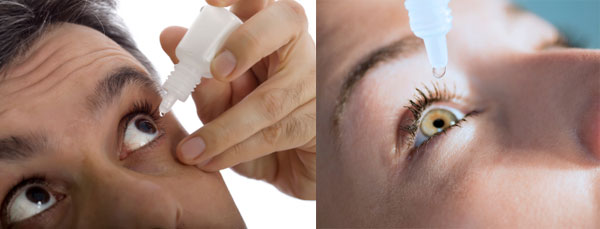
Finally: A dedicated section of this website provides information on each of the eye-drops used in glaucoma, including dosages, how each medication works, and most important, potential side-effects characteristic of each medication. This comprehensive information appears in the following section: an explanation on each of the medications for glaucoma.

